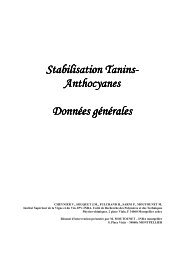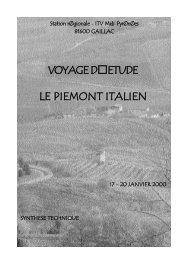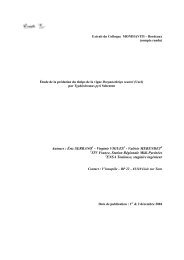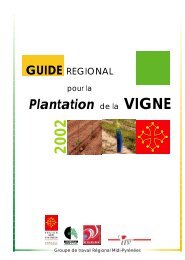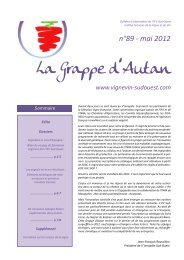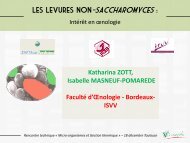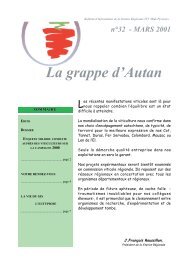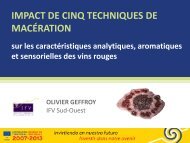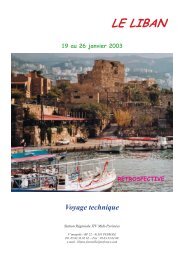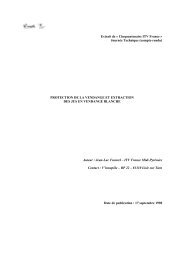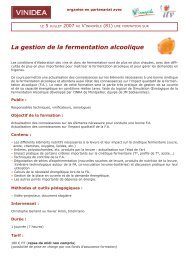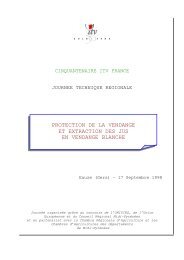Bioconversion de l'acide p-coumarique par Brettanomyces ...
Bioconversion de l'acide p-coumarique par Brettanomyces ...
Bioconversion de l'acide p-coumarique par Brettanomyces ...
You also want an ePaper? Increase the reach of your titles
YUMPU automatically turns print PDFs into web optimized ePapers that Google loves.
P-coumaric acid adsorption in wines to avoi<strong>de</strong>thylphenol production by brettanomycesDominique Salameh a,b , Cédric Brandam a , Roger Lteif b andPierre Strehaiano a“Wine active compounds 2008”. Proceedings, Oenoplurimédia Edition, p. 213-216.(a) Laboratoire <strong>de</strong> Génie Chimique – UMR CNRS 5503 – 5 Rue Paulin Talabot – 31106TOULOUSE – France.(b) Université Saint-Joseph, Faculté <strong>de</strong>s Sciences. Mar Roukoz, Mkallès Po.Box 11514,Beirut 1107-2050, Lebanon.Keywords : p-coumaric acid; adsorption; <strong>Brettanomyces</strong>; Saccharomyces.1. INTRODUCTIONThe p-coumaric acid is a natural polyphenol of wines, in the hydroxicinnamicacid family. The maceration process brings that hydroxycinnamic acid intogrape juice in the average concentration of 60 mg/L [1]. After fermentation andwine elaboration, the p-coumaric acid concentration cannot exceed 8 mg/L [2].It can be found in a free form, or boun<strong>de</strong>d to other wine components such astartaric acid to form the p-coumaroyltartaric acid or with glucose to form anheterosi<strong>de</strong>.The esterase activity of wine enzymes liberates the p-coumaric acid. In its freeform, it is transformed into 4-vinylphenol by a common enzyme to many winemicroorganisms, the cinnamate <strong>de</strong>carboxylase. The 4-vinylphenol is associatedto pharmaceutical compounds smell [3]. The problem occurs when wines arecontaminated by brettanomyces yeast. This yeast can turn the 4-vinylphenolinto 4-ethylphenol, due to its specific enzyme presence, the vinylphenolreductase [4]. Nowadays, the horse sweat smell in wines is associated to the 4-ethylphenol molecule. This reaction has a bad organoleptic impact on wine.Therefore, many works studied this bioconversion and proposed treatments toavoid its occurrence. The proposed solutions inclu<strong>de</strong>d many approaches, suchas a high hygienic level to stop brettanomyces contaminations, or physicaltreatments to eliminate the volatile phenol once produced [5].This work presents a new approach based on the p-coumaric acid adsorption onyeasts and oenological components. Its removal from the wine can avoid theethylphenol production. Adsorption on yeast cells mentioned in bibliography[6] was verified. Effects of different factors on the adsorption by two industrialadsorbents were tested.2. MATERIALS AND METHODS2.1. Adsorption tests on Saccharomyces and <strong>Brettanomyces</strong> cellsDifferent concentrations of <strong>Brettanomyces</strong> and Saccharomyces yeast wereobtained by fermentations. P-coumaric acid was dissolved in 1ml of pure



